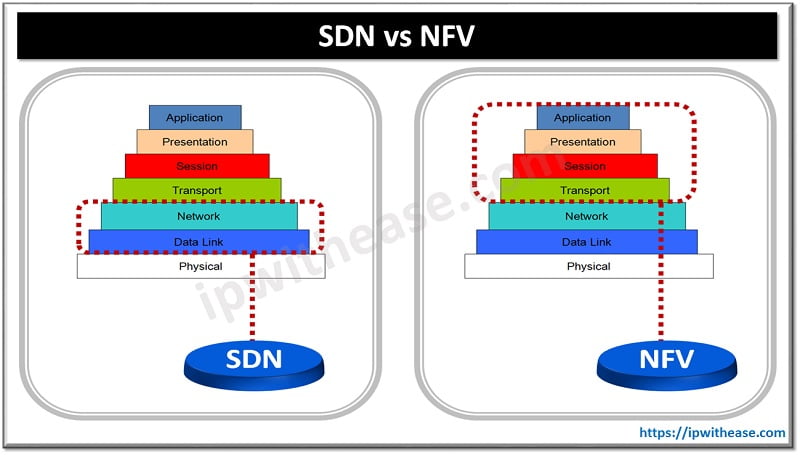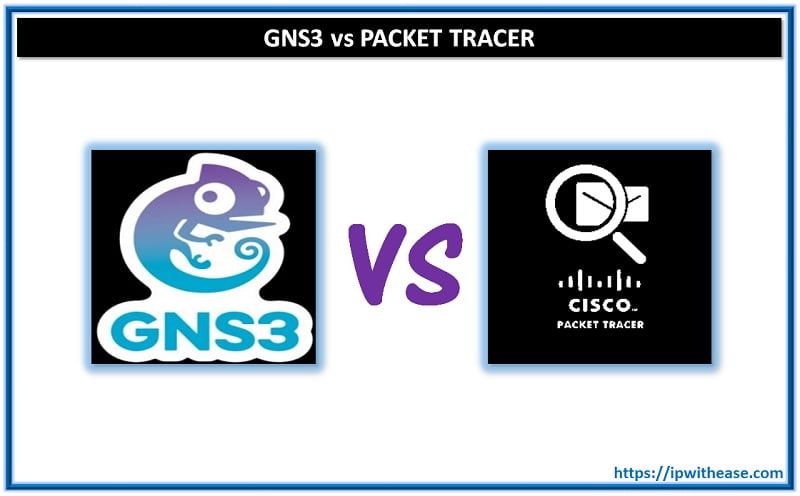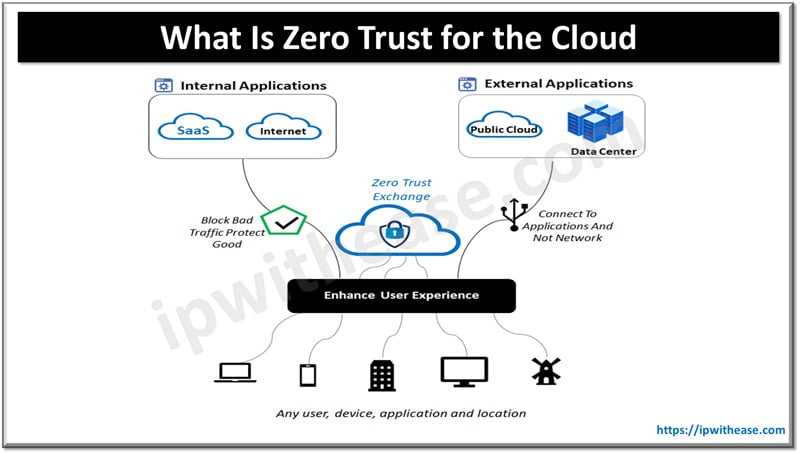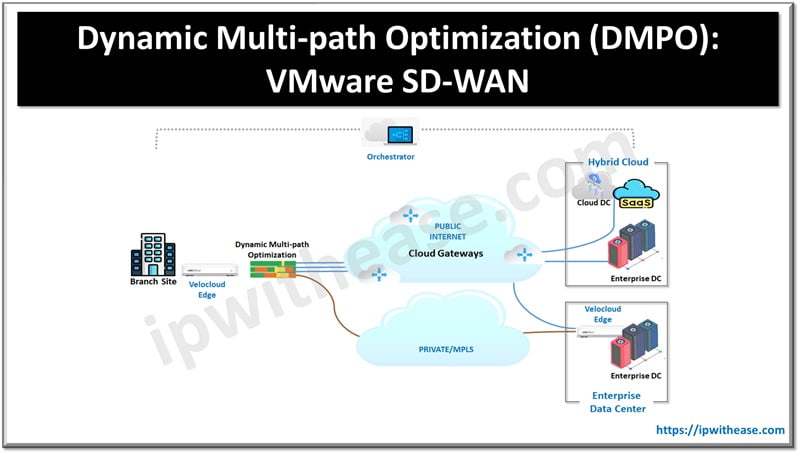Table of Contents
Introduction to SDN and NFV
Before discussing the difference between the two terms, let’s understand them first briefly.
- SDN (Software-defined networking) is the concept that allows to programmatically control, change, and manage network behaviour dynamically via open interfaces and abstraction of lower layer functionality.
- NFV(Network functions virtualization) is the concept to use the technologies of IT virtualization to virtualize entire classes of network node functions into building blocks that may connect to create communication services.
The working of SDN and NFV is very close to each other with some of overlapping scope of each other’s functions.

Similarities Between SDN & NFV
Software-Defined Networking (SDN) and Network Functions Virtualization (NFV) are two complementary technologies that are often used together to enhance network flexibility, agility, and efficiency. Here are the key similarities between SDN and NFV:
Virtualization and Abstraction
- SDN: Separates the control plane from the data plane, abstracting the network control functions from the physical hardware.
- NFV: Virtualizes network functions that traditionally run on dedicated hardware, allowing them to run on standard servers.
Centralized Management
- SDN: Centralizes network control through a software-based controller that can manage and program the entire network.
- NFV: Centralizes network function management by running multiple virtualized network functions (VNFs) on a single or few physical machines, managed by a centralized orchestration system.
Flexibility and Agility
- SDN: Provides flexibility in managing and optimizing network traffic dynamically through programmable interfaces.
- NFV: Increases agility by enabling rapid deployment and scaling of network services through software-based functions rather than relying on hardware appliances.
Cost Efficiency
- SDN: Reduces the need for expensive and specialized network hardware by allowing commodity hardware to be used in conjunction with centralized control software.
- NFV: Lowers costs by reducing the dependency on proprietary hardware and utilizing standard IT infrastructure for network functions.
Decoupling Hardware and Software
- SDN: Decouples the control logic from the physical network devices, allowing more flexible and dynamic network management.
- NFV: Decouples network services from dedicated hardware, enabling the use of general-purpose hardware to run multiple network functions.
Scalability
- SDN: Enhances scalability by allowing network administrators to adjust network policies and configurations centrally, without needing to interact with each individual device.
- NFV: Facilitates scalable deployment of network services, enabling rapid scaling up or down of network functions as needed.
Support for Automation
- SDN: Supports automation through APIs and programmable interfaces, allowing networks to be dynamically configured and managed.
- NFV: Supports automation by enabling the automated deployment, configuration, and management of virtual network functions.
Innovation and Customization
- SDN: Encourages innovation by allowing custom applications to interact with the network, enabling new services and capabilities.
- NFV: Allows for the customization and rapid development of network functions, leading to quicker deployment of new services.
Interoperability
- SDN: Promotes interoperability by providing a common control plane that can work across different types of network hardware.
- NFV: Enhances interoperability by enabling network functions to run on various types of hardware and across different vendors’ equipment.
Differences between SDN & NFV
While SDN (Software-Defined Networking) and NFV (Network Functions Virtualization) share some similarities, they serve different purposes and operate in distinct ways within the networking ecosystem. Here are the key differences between SDN and NFV:
Primary Focus
- SDN: Focuses on the separation of the control plane from the data plane. It aims to centralize network control and enable programmable management of the network infrastructure.
- NFV: Focuses on the virtualization of network functions. It aims to move network services (like firewalls, load balancers, and routers) from dedicated hardware devices to software running on general-purpose servers.
Layer of Operation
- SDN: Operates primarily at the network layer, dealing with the control of how data packets are forwarded across the network.
- NFV: Operates at the network service layer, focusing on the deployment, operation, and management of network functions and services.
Technology Approach
- SDN: Involves creating a centralized control plane that can configure and manage multiple network devices (e.g., switches, routers) through a programmable interface.
- NFV: Involves decoupling network functions from physical appliances, enabling them to run as software applications on virtual machines or containers.
Implementation
- SDN: Typically implemented using a centralized controller (like OpenFlow controllers) that interacts with network devices to determine how traffic should be handled.
- NFV: Implemented using Virtual Network Functions (VNFs) that can be deployed, managed, and scaled on virtualized infrastructure, often orchestrated by an NFV Management and Orchestration (MANO) framework.
Use Cases
- SDN: Commonly used for dynamic network management, traffic engineering, and creating adaptable, programmable network environments, such as in data centers or wide area networks (WANs).
- NFV: Commonly used to replace physical network appliances with virtualized equivalents, enabling more flexible deployment of services like VPNs, firewalls, or network address translation (NAT).
Underlying Concept
- SDN: Based on the concept of centralizing the network control logic to provide a global view and management of the entire network.
- NFV: Based on the concept of abstracting and virtualizing network functions to enable their deployment on commodity hardware rather than specialized appliances.
Relationship with Hardware
- SDN: Focuses on controlling and managing physical network infrastructure more efficiently, often requiring compatible hardware that can interact with the SDN controller.
- NFV: Reduces reliance on specialized network hardware, instead leveraging general-purpose servers to host virtualized network functions.
Standardization and Ecosystem
- SDN: Standardized by organizations like the Open Networking Foundation (ONF), with protocols like OpenFlow being central to its operation.
- NFV: Standardized by the European Telecommunications Standards Institute (ETSI), which provides a framework for the deployment and management of NFV.
Impact on Network Architecture
- SDN: Alters the network architecture by centralizing control and enabling dynamic configuration of network paths and policies.
- NFV: Alters the network architecture by transitioning network functions from hardware-based to software-based, thus changing how and where network services are deployed.
Comparison Table: SDN vs NFV
Below table gives a clear comparison of both the terms –
| Category | SDN | NFV |
| Strategy | Separation of control and Data, centralization of control and programmability of network | Replacement of dedicated appliances and devices with generic servers. |
| Protocol | OpenFlow | Not presently |
| Benefits | 1.Simplification of – Configuration of entire network Operation of network since consolidation 2.Reduced cost due to no longer dependency on expensive vendor specific routers and switches. | 1.Speed up time to market 2.Simplification of procurement, design, integration and management of infrastructure since this all is standardized. 3.Increased scalability by dynamically allocating resources to network functions. |
| Supporters to initiative | Enterprise Software and Hardware Vendors | Telecom Service Providers |
| Formalization | Open Networking Forum (ONF) | ETSI NFV Working Group |
| Target Scope | Cloud, Data Center and Campus environment | Service Provider domain |
| Applicability | Works on Layer 2 and 3 of OSI Model | Works on Layer 4-7 of OSI Model |
| Application run | Industry standard servers / switches | Industry standard Servers |
ABOUT THE AUTHOR

You can learn more about her on her linkedin profile – Rashmi Bhardwaj



